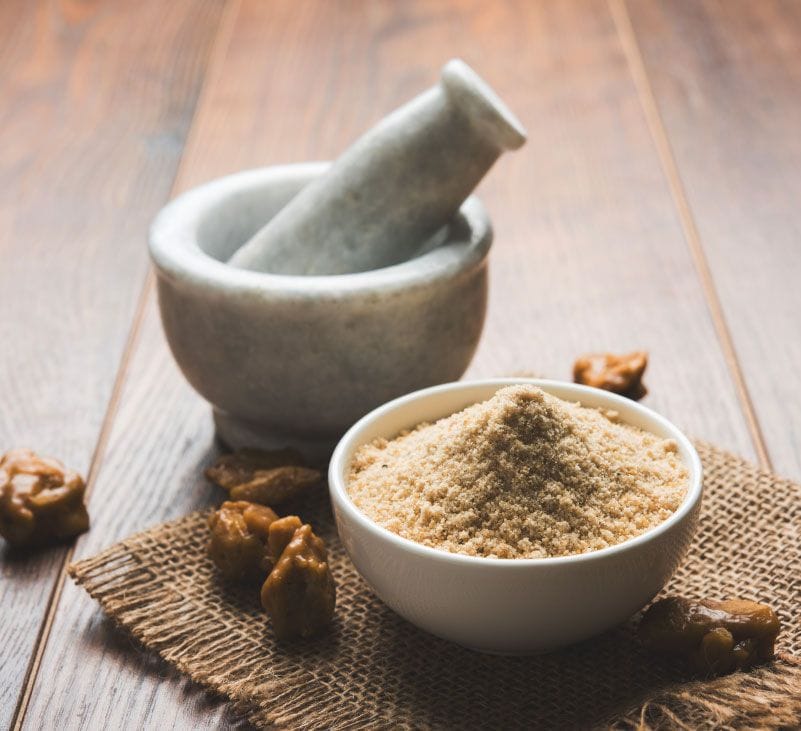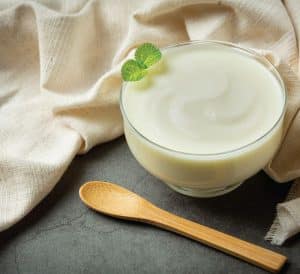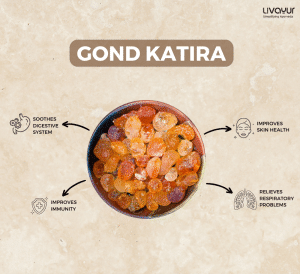
What is Asafoetida?
Asafoetida also known as Hing is popular across the world as a flavouring agent and as the best ingredient for traditional remedies for various ailments. Derived from the stems of Ferula plants, asafoetida (Ferula asafoetida) is an oleo-gum resin. In India, asafoetida is widely known as Hing or Hingu. [1]
Asafoetida is obtained from the taproots of Ferula plants that extend up to 15cm in diameter at the crown.[1] It is well-known for its pungent, persistent, and sulfurous odour. Indian cuisine has Asafoetida as a common ingredient in various recipes owing to its odour closely related to garlic and onion.[1]
The two main types of asafoetida are mass form & tear form, with the mass form being quite easily available. Ferula asafoetida, the natural asafoetida seeds contain multiple chemical elements categorized into three types: resins, gums, and essential oils.
Nutritional value of Asafoetida
Nutritional Value of Hing: [2]
| Name | Amount |
|---|---|
| Carbohydrates | 68% |
| Proteins | 4% |
| Fibres | 4% |
| Fats | 1% |
| Minerals | 7% |
Asafoetida Benefits
Asafoetida is one of the golden ingredients for various traditional remedies that cure asthma, bronchitis, intestinal parasites, whooping cough, flatulence, ulcer, epilepsy, stomach ache and various ailments related to the digestive system.[4]
Asafoetida benefits also include curing & managing health concerns such as unwanted pregnancy, sterility, excessive & painful menstruation, and leucorrhoea.[1]
1. Managing Neural Conditions

Asafoetida’s attribute as a nerve stimulant aids in managing neuropathic pain by boosting axonal regeneration and remyelination while bringing down lymphocyte infiltration.[1]
The antioxidant effect and suppressed acetylcholinesterase enzyme in asafoetida help in improving memory power.[1]
The gum extracts of asafoetida are proven with antioxidant properties and have the capacity to reduce oxidative stress. This may benefit in lowering the effects of PTZ-induced seizures. [1]
2. Asafoetida Uses For Healthy Heart
Asafoetida has been proven effective in reducing blood pressure after the successful examination of experimental animals.[1]
3. For Regulating Liver Health
If you want to lower the blood enzymes such as glutamate pyruvate transaminase, glutamate oxaloacetate transaminase, and alkaline phosphatase, then the hepatoprotective impact of asafoetida is a wonderful remedy.[1]
4. Antimicrobial Activities
Asafoetida extracts are tested & proven to treat multiple fungal & bacterial infections with effective antimicrobial activity.
The alcoholic & aqueous extracts showed evident antimicrobial activity when inhibited by the fungi & bacteria. B. subtilis, E. coli, Klebsiella pneumonia, and S. aureus were considered for testing for antibacterial activity, whereas A. niger and Candida albicans proved the antifungal activity of asafoetida.[1]
5. Well-Activated Anticancer Activities

Asafoetida uses also includes anti-cancer activities. The chemopreventive capacity of asafoetida was examined on a rat with colon cancer. It was studied by experimenting with the tumor size, tumor multiplicity, and tumor occurrence along with the levels of serum total sialic acid.[1]
6. Managing Diabetes
Asafoetida extracts exhibit blood-sugar lowering potential. The phenolic acid and tannins in the extract help in reducing the blood sugar levels in diabetes patients.[1]
7. Managing Weight-Loss
After thorough research of asafoetida on weight gain & fat buildup in diabetic patients, it is now proven that it contributes towards weight loss, lowering abnormal fat, and reducing adipocyte cell size. It is considered one of the viable therapy to control diabetes-induced obesity.[1]
8. Perfect for Antiparasitic Remedies
The aqueous extract of asafoetida triggers anthelmintic activity. It is examined in various worms under the conditions of paralysis period & death of worms and is discovered to carry antiparasitic properties.[1]
9. Rich Antioxidant Source
The studies focussed on inhibiting the levels of lipid peroxidation in rat liver and showed the best results.[2] Therefore, asafoetida extracts are known to exhibit effective antioxidant activity.
10. Natural Muscle Reviver
Different preparations of asafoetida & its extracts were examined on multiple types of muscles and showed positive results. The smooth, relaxing attribute of asafoetida and its coumarin compound umbelluprenin was tested by in-vitro studies. With the presence of umbelliprenin, asafoetida extract acts as a perfect muscle relaxant on tracheal smooth muscles.[1]
11. A Great Aid for Your Appetite
The digestive stimulant properties of asafoetida have effective physiological effects with increased saliva and salivary amylase production. It contributes to the digestion of dietary lipids by boosting bile flow and raising the secretion of bile acid apart from accelerating the pancreatic and small intestine digestive enzymes.[1]
12. Healthy & Safe Care for Ulcer
The aqueous suspension of asafoetida is proven to have antiulcerogenic activity after multiple examinations and animal studies.[3]
FAQs
1. What is asafoetida?
Asafoetida also known as Hing is popular across the world as a flavouring agent and as the best ingredient for traditional remedies for various ailments. Derived from the stems of Ferula plants, asafoetida (Ferula asafoetida) is an oleo-gum resin. In India, asafoetida is widely known as Hing or Hingu. [1]
2. What are the asafoetida benefits?
Asafoetida is one of the golden ingredients for various traditional remedies that cure asthma, bronchitis, intestinal parasites, whooping cough, flatulence, ulcer, epilepsy, stomach ache, and various ailments related to the digestive system.[4]
Asafoetida benefits also include curing & managing health concerns such as unwanted pregnancy, sterility, excessive & painful menstruation, and leucorrhoea.[1]
3. Is asafoetida helpful for weight loss?
It is now proven that it contributes towards weight loss, lowering abnormal fat, and reducing adipocyte cell size. It is considered one of the viable therapy to control diabetes-induced obesity.[1]
4. What do asafoetida seeds contain?
Ferula asafoetida, the natural asafoetida seeds contain multiple chemical elements categorized into three types: resins, gums, and essential oils.
Conclusion
Asafoetida uses has been an integral part of Indian Cuisine, Traditional remedies, and natural therapy for ages. Indian cuisine has an exclusive emphasis on the spices & ingredients that blend into its recipe. Asafoetida is one of the few spices that marks the uniqueness of Indian Cuisine.
The strong pungent aroma invokes the digestive enzymes and balances the flavors of any cooked dish perfectly. While addressing multiple health concerns, asafoetida is a hand-picked remedy & wonderful therapy that has been tested for its Ayurvedic properties.
Disclaimer: The information mentioned here is for educational purposes only and is not intended to be an alternative to medical treatment by a medical practitioner. Please consult a professional medical practitioner before any dietary modifications.
References:
- Biological activities and medicinal properties of Asafoetida: A review
- Hing (Ferula asafoetida). A Review Based Upon its Ayurvedic and Pharmacological Properties
- Ferula foetida” hing”: A review
- Handbook of Medicinal Herbs
























